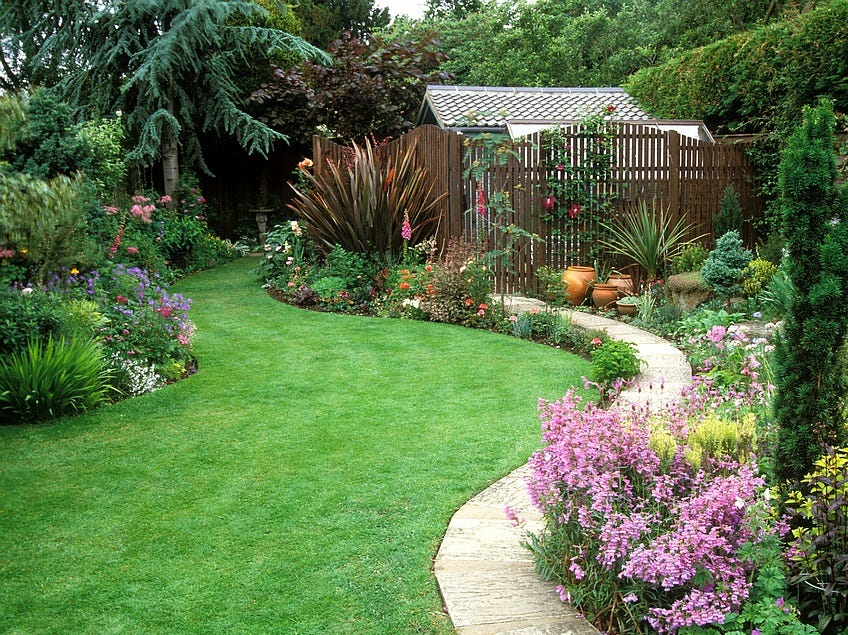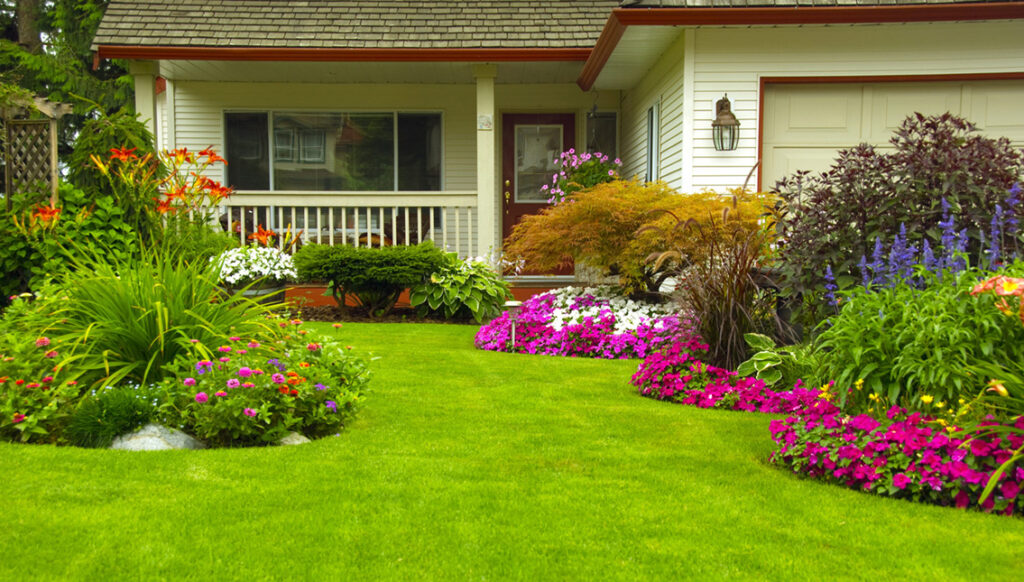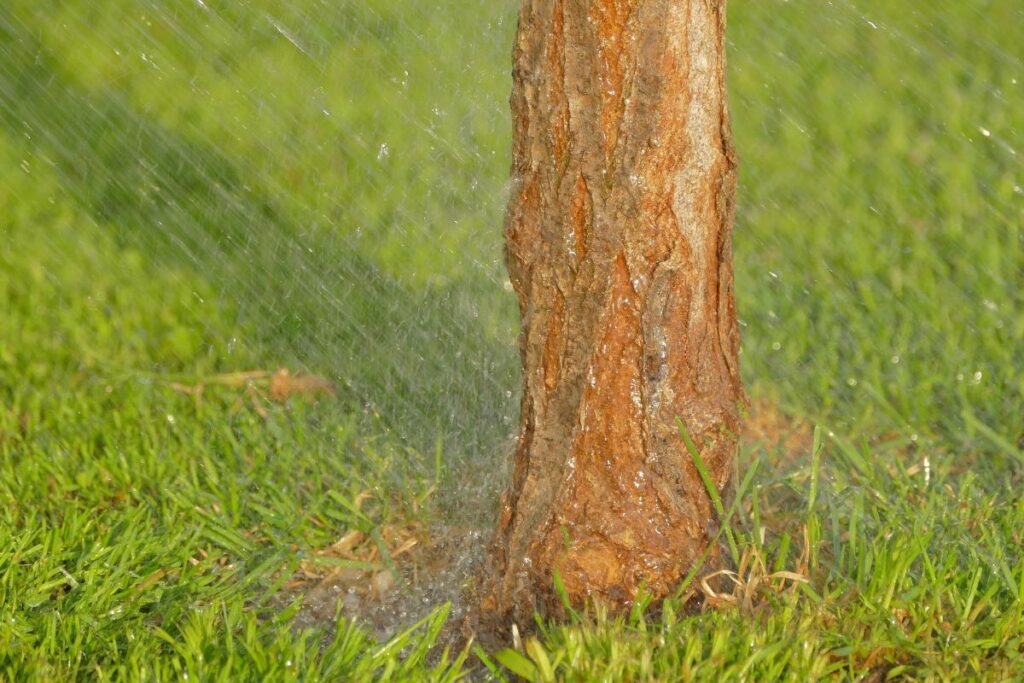Extreme heat can be tough on your garden, especially your lawn and trees. High temperatures and prolonged sun exposure can cause stress and damage to your plants. However, with the right preparation and care, you can ensure that your lawn and trees stay healthy, vibrant, and resilient during heat waves. In this article, we’ll provide expert advice on how to protect your lawn and trees from extreme heat, so they can thrive even under harsh conditions.


Proper watering is one of the most critical factors in protecting your lawn and trees from heat stress. In hot weather, water evaporates quickly, leaving your plants thirsty and vulnerable to damage.
Lawn Watering Tips:
Water Early in the Morning or Late in the Evening: Watering early in the morning or after the sun sets reduces water evaporation and ensures that your lawn has time to absorb moisture before it gets too hot.
Deep Watering: Water your lawn deeply rather than frequently. Shallow watering encourages shallow root growth, while deep watering encourages strong, deep roots that are more resilient to heat.
Watering Schedule: In extreme heat, your lawn may need up to 1-1.5 inches of water per week, either from rainfall or irrigation.
Tree Watering Tips:
Water Slowly: When watering trees, use a slow-drip method to allow the water to penetrate deep into the soil. You can use a soaker hose or drip irrigation system to ensure that the water reaches the roots.
Deep Watering for Trees: Trees need deep watering to keep their root systems hydrated. Make sure to water the area around the root zone, not just the trunk.
Mulch is an excellent way to protect your lawn and trees from the damaging effects of extreme heat. It acts as an insulating layer that helps retain moisture, regulate soil temperature, and prevent weed growth.
Benefits of Mulching:
Moisture Retention: Mulch helps keep the soil moist by reducing evaporation, which is especially important during hot weather.
Temperature Regulation: Mulch acts as a barrier to the sun’s heat, keeping the soil cooler and protecting the roots of your plants.
Weed Control: Mulch prevents weeds from growing, which compete with your grass and trees for water and nutrients.
How to Apply Mulch:
For Lawns: Apply a thin layer (about 2-3 inches) of mulch around the edges of your lawn to retain moisture in the soil. Avoid piling mulch on the grass itself, as this can suffocate the lawn.
For Trees: Apply 3-4 inches of mulch around the base of your trees, keeping the mulch a few inches away from the trunk to avoid moisture buildup that could lead to rot.
While trees naturally provide shade, there are additional measures you can take to shield your lawn and trees from the direct heat of the sun. Too much exposure to sunlight can stress your plants and lead to sunburn on their leaves.
Shade for Lawns:
Use Shade Cloth: Consider using shade cloth or garden netting over parts of your lawn to provide relief from the sun. These can be purchased in different densities to provide varying levels of shade.
Strategic Tree Planting: Plant trees or shrubs in areas where they can provide natural shade for your lawn. This can help reduce the heat on your lawn and create cooler microclimates.
Shade for Trees:
Create a Shade Canopy: If your trees are young and still growing, create a temporary shade canopy with garden fabric to protect their tender leaves from direct sunlight.
Prune Carefully: While it’s important to keep your trees well-pruned, avoid heavy pruning during hot months. This can expose the tree to more sunlight and heat stress.
A healthy lawn and trees are better equipped to handle extreme heat. Proper fertilization and aeration can promote strong roots and better heat tolerance.
Lawn Fertilizing:
Use Slow-Release Fertilizer: Apply a slow-release fertilizer to your lawn in early spring to encourage steady growth. Avoid fertilizing in the middle of summer, as this can encourage growth that is vulnerable to heat stress.
Aerate the Lawn: Lawn aeration helps relieve compacted soil, allowing air and water to reach the roots more effectively. Aerate your lawn in the early spring or fall for the best results.
Tree Care:
Fertilize Trees Appropriately: Use a slow-release fertilizer for trees to promote healthy root growth. Be cautious not to over-fertilize, as this can stress the tree.
Aerate the Soil Around Trees: Gently aerating the soil around the base of the tree can help improve drainage and root health.
During extreme heat, avoid putting additional stress on your lawn and trees. Excessive foot traffic or frequent mowing can damage your plants and make them more vulnerable to heat.
Lawn Care:
Limit Foot Traffic: Avoid walking on your lawn during the hottest parts of the day to prevent compacting the soil and stressing the grass.
Mow Less Frequently: Raise the height of your lawn mower and reduce mowing frequency during extreme heat. Taller grass helps shade the soil and retain moisture.
Tree Care:
Avoid Heavy Pruning: While it’s important to maintain your trees, avoid heavy pruning during hot weather, as it can make the tree more susceptible to heat damage.
Conclusion: Keep Your Lawn and Trees Cool During the Heat
Extreme heat doesn’t have to spell disaster for your lawn and trees. By implementing smart watering practices, mulching, providing shade, and promoting healthy growth, you can protect your plants and help them thrive even in the hottest conditions. By following these simple yet effective steps, you’ll have a lush, healthy garden that’s prepared for the heat and able to weather the toughest summer days.
Focus Keywords: protect your lawn, protect your trees, extreme heat, lawn care, tree care, mulch for lawn, watering lawn, healthy garden, summer heat care



